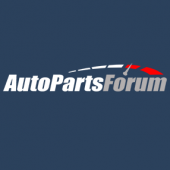-
Welcome to Auto Parts Forum
Whether you are a veteran automotive parts guru or just someone looking for some quick auto parts advice, register today and start a new topic in our forum. Registration is free and you can even sign up with social network platforms such as Facebook, X, and LinkedIn.
Indirect Tire-Pressure Monitoring System: The ‘Other’ TPMS
-
Similar Topics
-
By Dorman Products
Repair a Camry touchscreen without replacing the entire infotainment system | Dorman OE FIX 601-711
-
By Counterman
Australian clutch manufacturer Clutch Industries is launching two versions of its UniClutch system in the United States.
UniClutch and UniClutch Sport will be the first iterations of the system to launch in the United States.
UniClutch’s dual-core technology significantly boosts torque capacity without compromising drivability, according to the company.
“Its one-of-a-kind, patented and adaptable design fits a multitude of vehicles, simplifies inventory management, expedites clutch replacement time, and lessens common installation problems,” Clutch Industries said in a news release.
Compared to UniClutch, UniClutch Sport offers 15% more torque capacity and a sport-tuned pedal feel for more serious enthusiasts, the company noted.
“We’re thrilled to introduce UniClutch to the United States after seeing strong early success in the Australia market,” said Brad Davis, CEO of Clutch Industries. “Auto repair shop feedback has been very positive, especially from technicians praising a faster and easier installation process. It’s also been our experience that shops can carry 20 times less inventory without impacting their ability to service any vehicle. We feel confident that UniClutch has the potential to redefine the performance clutch market with this revolutionary design.”
Clutch installation typically is an expensive, complicated and lengthy process. UniClutch’s sealed design eliminates the need for flywheel machining, while the Flex Fit technology and pre-alignment allows for hassle-free “bolt-on” installation in minutes. The patented modular technology adapts to different engines and transmissions, greatly reducing installation times and empowering technicians to quickly service a wider range of vehicles.
“For parts distributors, UniClutch’s patented Flex Fit technology will be transformative in inventory management, simplifying thousands of product variations to just a few,” Clutch Industries said. “This creates a solution for the complex ordering process for distributors, avoiding the challenges faced by an ever-changing supply chain. With UniClutch, parts distributors can provide consistent service to customers with a better return on investment.”
A unique QR code found on every UniClutch contains manufacturing and performance specifications for each unit.
At launch, UniClutch will retail exclusively at select NAPA Auto Parts stores across the United States and is available for purchase online via
link hidden, please login to view. The post
link hidden, please login to view appeared first on link hidden, please login to view.
link hidden, please login to view -
By Counterman
Once hated and touted as “power robbers,” we’ve learned over the years how emission-control systems not only protect our environment, but also how they contribute to the overall performance, economy and longevity of today’s engines as an integral part of the combustion process.
Emission-control components are high on the list of parts you sell, because they affect vehicle operation, and if they’re not working properly, they result in the dreaded “Check Engine” light. There are many ways that the various emission systems on a vehicle tie together, but a look at the main players can help you develop a base understanding of how the overall system works.
Positive Crankcase Ventilation
Any internal-combustion engine produces blowby gasses, which are gasses from the combustion process that are forced past the piston rings into the crankcase. These gasses must be vented to prevent pressure buildup, which would cause oil to be forced past gaskets and seals. These gasses also combine with the oil vapors in the crankcase to form sludge and dilute the oil with unburned fuel.
From the early days, we knew that blowby gasses had to go, so we got rid of them – right into the atmosphere. At least that’s what we did until the 1960s (hello smog).
To reduce air pollution, auto manufacturers began to utilize positive-crankcase-ventilation (PCV) systems. PCV was a simple system to draw the vapors out of the crankcase using engine vacuum. The vapors and unburned fuel were then drawn back into the cylinders and burned, eliminating them as a source of air pollution.
But there was another benefit to it. Normal system operation pulled fresh air through the crankcase, which removed moisture – extending oil life and reducing sludge. Since PCV is more or less a controlled vacuum leak, the flow rate is important, and even on older vehicles, the fuel systems are calibrated to work in conjunction with it.
PCV systems still are utilized on modern engines, and engine-management systems are able to monitor their operation by checking the flow rate. The efficiency of modern PCV systems not only reduces emissions but also drastically extends oil life. PCV components range from the simple valves on an older vehicle to more complex integrated PCV orifices/oil separators found on or as part of the valve cover on many new engines.
Other PCV-related components include crankcase-ventilation filters and breather hoses. Don’t forget that these components are designed and calibrated to each engine and fuel system, even on older vehicles. Just because it fits doesn’t mean it’s correct, and also beware of aftermarket “catch cans.” Many people think this is a performance upgrade that traps oil vapor and contaminants before they’re drawn into the intake. This is true on some older vehicles, but on most modern engines the PCV system is so refined that it cannot be improved upon. Installing a “catch can” on these engines will most likely only result in a drivability issue.
Exhaust-Gas Recirculation
Exhaust-gas recirculation (EGR) is an emission-control technique designed specifically to reduce the formation of nitrogen oxide (NOx), a very unhealthy and dangerous gas that’s formed during the high temperature and pressure of combustion. It works by recirculating exhaust gas back into the cylinders and cooling the combustion process.
In reality, it doesn’t actually “cool” the combustion process, but by displacing oxygen, it prevents the air/fuel mixture from burning hot enough to form NOx. EGR can offer advantages to the combustion process, and modern engine-management systems are designed to maximize this, with the efficiency of gasoline engines often improved as a result. Not only is it illegal, but disabling any type of EGR control also will result in a loss of performance.
On diesel engines, EGR is again an effective emission-control device, but becomes considerably more complicated. Since diesel fuel ignites with the heat of compression, higher temperatures promote efficiency … but unfortunately also the formation of NOx. To combat this, many modern diesel engines have EGR coolers that allow a larger mass of recirculated exhaust gas into the intake.
But, this reduces the efficiency of the combustion process, which creates excessive soot. To combat this, a diesel-particulate filter (DPF) is installed in the exhaust to capture and store the soot, which must be burned off periodically to regenerate the filter.
Since EGR systems are critical for emissions and performance, they’re closely monitored and controlled by the powertrain control module. Common EGR components include everything from the common EGR valve to pressure sensors, EGR tubes, EGR coolers, control solenoids and pressure sensors.
Exhaust and Catalytic Converters
Catalytic converters need no introduction. Since the 1970s, they’ve been the major emission component that chemically converts the harmful pollutants in the exhaust into harmless gasses. On todays’ vehicles, they work in conjunction with oxygen and/or air/fuel ratio sensors, also well-known emission-control components.
Before the converters (pre-cat), the oxygen sensors report the air/fuel ratio to the engine control module so it can adjust the fuel mixture based on operating conditions and ensure that an improper mixture will not damage the converter itself. After the converter, a post-cat sensor again sends a signal to the engine control module, from which it determines the efficiency of the converter.
The diesel side again can seem more complicated. They too have what appears as a catalytic converter, but on a diesel, they contain not only a catalyst but also the DPF. They’re sometimes referred to as aftertreatment devices, and overall design can differ between vehicle makes. The process that occurs is referred to as selective catalytic reduction (SCR), during which the catalyst works in conjunction with injected diesel-exhaust fluid (DEF) to convert NOx into nitrogen, carbon dioxide and water vapor.
The DPF traps the soot, which is burned off through passive or active regeneration, and in some situations the process must be performed by a service technician. NOx sensors monitor the entire SCR process.
In addition to catalytic converters, exhaust-related emission components include oxygen, air/fuel ratio and NOx sensors; DEF and DEF-related components; and diesel aftertreatment devices.
Evaporative Emissions
Evaporative emissions refer to anything that helps keep fuel vapors in the tank and out of the atmosphere. This requires very strict monitoring of the pressure in the tank, and when venting is required, filtering of the fumes. EVAP canisters – sometimes referred to as charcoal canisters – store fuel vapors to prevent them from reaching the atmosphere until they can be drawn in by the engine.
The entire process of evaporative emissions requires multiple components, including the EVAP canister, hoses, lines, canister-purge solenoids, canister-purge valves, canister-vent solenoids and leak-detection pumps. The design of these systems often differs between manufacturer, so it can take some time to get used to all the different components.
The post
link hidden, please login to view appeared first on link hidden, please login to view.
link hidden, please login to view -
By Counterman
Gaskets and seals can be found anywhere two components are joined together and there’s a fluid (or gas) to be contained. As a rule, a “gasket” is used to create a leakproof seal between non-moving (static) parts. What we think of as a “seal” (pinion seal, front pump seal, wheel seal, etc.) is used when one of the components is in motion (usually a rotating shaft). These also are referred to as “dynamic” seals.
O-rings are classified as gaskets, even though they’re commonly referred to as “seals” in certain applications. Whatever your customer chooses to call them, all we really need to know is that they have a leak somewhere that needs sealed!
Gaskets are catalogued by their application (valve-cover gasket, exhaust gasket, oil-pan gasket, etc.) but the materials used to manufacture each type of gasket can be diverse. Advances in sealing-material technology over the years have resulted in an ever-changing landscape of paper, rubber, plastic and metal gasket materials used in
various assemblies.
Cork and paper were the materials of choice for most engine and drivetrain components, apart from cylinder-head gaskets and exhaust gaskets, which require a metallic material composition due to high combustion pressures and temperatures. Elastomeric rubber and silicone materials have slowly replaced cork and paper gaskets, but their lack of rigidity required that these soft, injection-molded gaskets be “captured” in grooves or recesses machined into the flanges they’re sealing.
Many modern gaskets feature elastomer sealing surfaces bonded to plastic or metal carriers, providing rigidity and resulting in reliable sealing between flat-milled surfaces. The rigid “backbone” found in many rubber valve-cover, transmission-pan and differential gaskets not only provides support, but also acts as a “compression stop” to prevent over-torquing and crushing the gasket.
Metallic gaskets have been used in exhaust systems for many years, but many current flanged pipe and manifold gaskets are of a multi-layer steel (MLS) design. Like MLS head gaskets, these are very thin, and require smooth-machined surfaces to seal properly.
Composite metal-graphite exhaust gaskets are thicker and more compressible to help seal imperfect flange surfaces. Compression also is desirable for some single-use metal gaskets that often are overlooked during routine maintenance: crush washers. Crush washers are found on spark plugs and drain plugs, as well as banjo fittings found on some brake hoses and fuel lines. Crush washers most often are made of copper or aluminum, but some manufacturers use steel crush washers on their drain plugs. These are single-use fasteners, and should be recommended if they’re not included with the filter or hose.
In some instances, cut or pre-formed gaskets have been eliminated in favor of a chemical sealer. RTV gasket maker and anaerobic sealants are the most common categories, although there are specialized compounds for a few specific applications. Conventional gaskets rely on compression or deformation to create a leakproof seal between components, but chemical sealants create a bond between the pieces and well as filling in the tiny voids and imperfections in the mating surfaces. Known as “formed-in-place” gaskets, these chemical sealants require thorough cleaning of the mating surfaces prior to application, and their strong adhesion can sometimes make later disassembly more difficult.
Pre-formed gaskets and chemical sealers rarely are used together. A well-designed gasket is meant to be installed “dry,” except for a small dab of RTV at the joints between multi-piece gaskets. Paper and cork-based gaskets can benefit from the light application of a tacky adhesive sealer to help hold them in position during assembly, although some gasket manufacturers offer gaskets with adhesive backing already applied.
Occasionally, you may run across a gasket that’s not catalogued anywhere in your system. While some newer gaskets truly are “dealer-only” items, it may just be that the gasket doesn’t actually exist! I’m often asked for exhaust-manifold-to-pipe “donut” gaskets and oil/transmission-pan gaskets that can’t be found anywhere. In the case of the exhaust manifold, these often are tapered “metal-to-metal” joints, with no gasket between the components.
As for the pan gaskets, the OEM very likely used an RTV “form-in-place” gasket maker in place of a pre-made gasket. Selecting an appropriate RTV from your own inventory can salvage the sale, and save your customer the time spent searching elsewhere.
On those occasions when a particular cork or paper-type gasket isn’t available from your supplier, you might offer a sheet of gasket material of the appropriate thickness and type so the customer can create a custom gasket to seal in whatever fluid or lubricant they’re presently leaking!
The post
link hidden, please login to view appeared first on link hidden, please login to view.
link hidden, please login to view 
-
By Counterman
To remind automotive technicians and service facilities that they must keep their TPMS-tool software updated regularly, a group of TPMS tool and sensor manufacturers, along with the Tire Industry Association (TIA), has launched a national public-service campaign called “Update Your TPMS Tools!”
The Coalition of TPMS Manufacturers, including ATEQ, Bartec, Continental and Schrader, along with the
link hidden, please login to view, has come together to tackle the challenge faced by technicians who have not kept their TPMS-tool software up to date. Having up-to-date software is particularly essential with the introduction of the latest generation of TPMS sensors. By updating their TPMS-tool software, technicians can prevent TPMS service issues and avoid unnecessary delays, ultimately delivering improved customer service. The launch of the “Update Your TPMS Tools!” campaign coincides with National Tire Safety Week, an annual consumer-awareness initiative of the U.S. Tire Manufacturers Association aimed at educating motorists about tire care, safety and awareness as essential parts of road safety.
“TPMS tool manufacturers are routinely releasing software updates throughout the year,” said Shawn Pease, director of automotive tire service at the Tire Industry Association. Many factors can initiate a software change, such as new sensor technologies, vehicle-model introductions or vehicle recalls. Keeping the TPMS-tool software up to date helps ensure faster, more successful TPMS service with fewer comebacks.”
According to recent surveys, up to 35% of technicians have not updated their TPMS-tool software in the last year.
When working with the newest generation of TPMS sensors, technicians need the latest generation of TPMS-tool software, the coalition says. Without it, they cannot perform TPMS service successfully.
In addition to alerting shops and technicians about the need to register their tool and keep its software updated, the campaign is stressing the need to always perform a sensor relearn when rotating tires or performing TPMS service. Failing to perform the relearn is one of the most common reasons for TPMS-service comebacks. Up to 20% of technicians surveyed don’t regularly perform the relearn when doing tire service, according to the coalition.
link hidden, please login to view offers links to software-update downloads for many of the most popular TPMS tools. Technicians also can check with their tool manufacturer’s website to find links for TPMS-tool software updates. By engaging technicians and service facilities in the “Update Your TPMS Tools!” campaign, TPMS manufacturers and the TIA seek to raise awareness about the crucial role of TPMS-tool software updates in delivering exceptional TPMS service. Technicians are encouraged to prioritize updating their tools regularly, ensuring they can provide efficient, reliable and seamless TPMS service to their valued customers.
The post
link hidden, please login to view appeared first on link hidden, please login to view.
link hidden, please login to view
-




Recommended Posts
Join the conversation
You can post now and register later. If you have an account, sign in now to post with your account.
Note: Your post will require moderator approval before it will be visible.